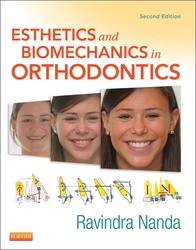「重要なお知らせ:日本語書籍をご購入いただき、eLibraryをご利用の皆さまへ」
エルゼビアは、より快適にサービスをご利用いただくため、システムの重要なアップデートを実施いたします。
現在、新サイト、eBooks+への移行が進められています。
新規ユーザー登録および書籍の登録はElsevier eLibraryでは停止しております。
12月15日以降に
こちらよりご利用・ご登録ください。
Book Description
Esthetics and Biomechanics in Orthodontics, 2nd Edition provides everything you need to know to successfully apply biomechanics in clinical orthodontics. This edition features new content in the areas of tooth movement, treating Class III malocclusions, skeletal anchorage, Surgery First treatment plans, and space closure. In addition to comprehensive guidance on basic biomechanic principles, this state-of-the-art reference also shows how all techniques can apply biomechanical principles to improve the force delivery, understand and prevent side effects, and achieve predictable results.
- Highly regarded lead author, Dr. Ravindra Nanda, is a widely known and respected educator in the field of orthodontics.
- Comprehensive coverage of diagnosis, treatment planning, and esthetics in tooth display provides a solid foundation in orthodontia and biomechanic problem solving.
- Case reports include high-quality photographs, radiographs, and illustrations to better show biomechanical principles.
- Radiographs and line drawings accompany clinical photographs to help illustrate the various stages of treatment.
- NEW! Content on the fundamentals that guide orthodontic tooth movement offers a clear understanding of how orthodontic appliances work and their role in designing treatment methodologies.
- NEW! Content on procedures and indications for optimal space closure helps you define priorities in treatment planning and understand all the treatment alternatives.
- NEW! Detailed information on biomechanics-based management of impacted canines provides treatment planning strategies and biomechanic techniques to achieve desired results without increasing treatment time.
- NEW! Coverage on modalities for the treatment of Class III malocclusions offers insight into new treatment protocols — such as corticotomy-assisted facemask therapy and corticotomy-assisted maxillary protraction — that are available to effectively treat these occurrences.
- NEW! Detailed information on the different forms of skeletal anchorage (including mini-implant technology) shows how certain challenges associated with types of tooth movement can now be overcome by applying sound biomechanical principles to skeletal anchorage.
- NEW! In-depth coverage of the Surgery First (SF) treatment plan offers step-by-step examples to help explain the technique of Sendai SF and its benefits


 (0 rating)
(0 rating) 






